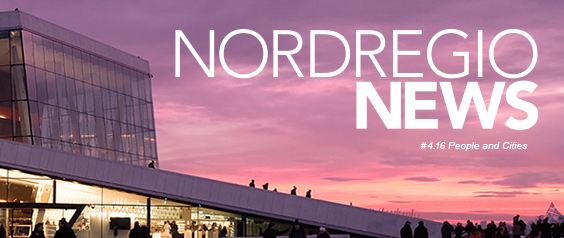The concept of the Public–Private–People partnership (4P) is one emerging way of highlighting the need for developing the involvement of private actors and the general public in a joint process. But what challenges can it address and what kind of potential could this new concept have?
The Nordic countries emphasise the importance of citizen participation in their planning legislations and policies. At the same time they continuously develop new models in order to make private companies more involved in planning processes through different types of public-private partnerships and cooperation modes. Typically, city administrations’ cooperation with companies on one hand and citizen participation on the other hand is discussed separately although they both are expected to influence the same planning process. The concept of Public-Private-People partnership (4P) is one emerging way of highlighting the need for developing the involvement of private actors and the general public in a joint process. But what challenges can it address and what kind of potential could this new concept have?
Research reviewed by Nordregio as part of the Central Baltic INTERREG project Baltic Urban Lab shows that there are many challenges in current ways of combining public-private partnerships and citizen participation. It is for example often emphasised by critical researchers how public-private cooperation between city administrations and private actors such as land-owners and developers limit the transparency of decision-making and the possibility for public input. Emphasising the different positions of private actors and citizens in planning processes, Higdem and Hanssen point out how public-private partnerships and citizen participation are based on different ideas and principles. Public-private partnerships are based on an idea of networked governance practiced through negotiations and formalised through binding contracts. Citizen participation, in turn, is conducted top-down and is based on the principles of hierarchical governance and the idea of offering a possibility of “making one’s voice heard”.
The imbalance between the influence of private actors and the general public is also affected by the temporal gap between public-private partnerships and public participation. It is a recognised problem that binding agreements between public and private actors may outline the development principles early in the project, while the public participation processes often take place later in the process. Lack of public input early in the planning processes is found to risk increasing the focus on economic considerations and economic sustainability of the project on the expense of creating liveable urban environments based on the needs of the local communities.
The concept of Public-Private-People partnerships has emerged as a way to address the problems related to public-private partnerships by bringing the general public (“people”) into the partnerships alongside with public and private actors. There are also other new policy concepts with an aim to create more inclusive governance involving different actors, but the 4P-approach specifically targets attention to adding the general public and the citizens to public-private partnerships and particularly addressing the problems of exclusion and lack of transparency. There is no single model or definition of the concept, and its principles can be adapted in different ways case by case. In general, however, 4P-approaches focus on developing planning processes that can be both efficient and open by including both private actors and citizens. Practices of stakeholder involvement stem from legislation and local and national planning cultures, and can thereby be difficult to influence by individual planners. By pointing attention to the in-built imbalances in terms of positions and influence between private actors and the general public, however, the concept of Public-Private-People partnerships could at least be a first step of helping planners to become aware of, and address the differences in resources and influence between actors, and also to find ways to utilise the strengths of the different actors.
Article continues below


